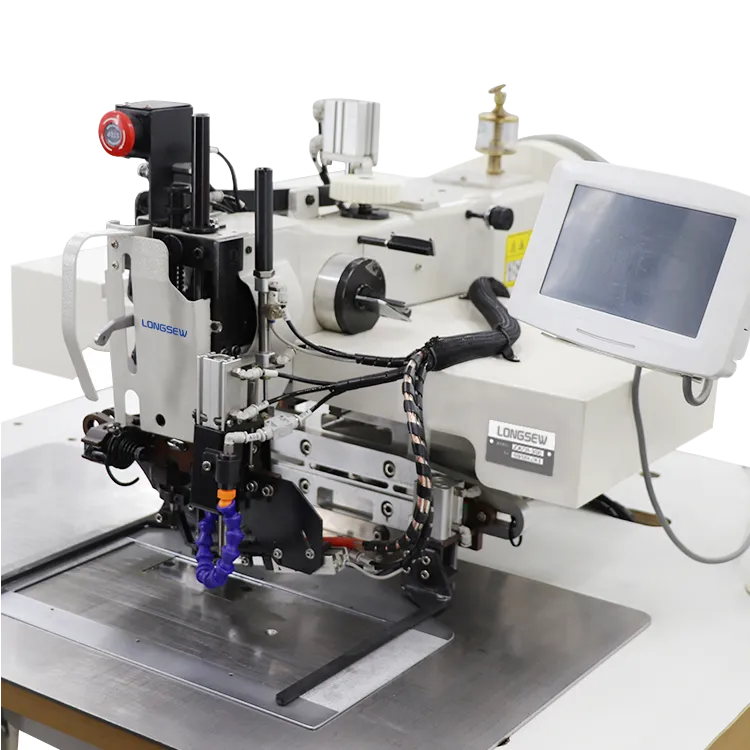what is an overlocking stitch
Understanding Overlocking Stitches A Comprehensive Guide
In the world of textiles and sewing, the technique of overlocking stitches holds a vital place, particularly for those who engage in garment construction or textile arts. Overlocking stitches, often produced by a specialized machine called an overlocker or serger, offer both aesthetic and functional benefits to various sewing projects. This article delves into what overlocking stitches are, their significance, and how they can enhance your sewing endeavors.
What is an Overlocking Stitch?
At its core, an overlocking stitch is a kind of stitch that encases the edges of fabric, preventing fraying while also creating a neat and professional finish. This technique is essential for knit fabrics, woven materials, and most garment construction. Unlike a standard sewing machine, which typically uses a straight stitch or zigzag stitch, an overlocker utilizes multiple threads (usually three to five) to create a stitch that secures the fabric edges simultaneously.
The typical overlocking stitch comprises a combination of looping and locking actions, which results in a durable seam capable of stretching with the fabric. This is especially important for knit materials, where the seams need to accommodate stretching and movement without breaking.
The Importance of Overlocking Stitches
Overlocking stitches serve several crucial functions in sewing. Firstly, they prevent fabric edges from fraying over time. Fraying can occur due to washing, wearing, and general use, which can result in an unkempt and untidy appearance. By sealing the edges with an overlocking stitch, the longevity of the garment is greatly enhanced.
Secondly, overlocking stitches provide a professional finish. Clothing items that are finished with overlocked edges often look more polished than those simply sewn with straight or zigzag stitches. This attention to detail can elevate the overall quality of the garment, making it suitable for both personal wear and commercial sale.
Additionally, overlocking stitches offer versatility. Many overlockers allow for various stitch configurations and settings. Depending on the type of fabric and the desired finish, sewists can adjust stitch tension, width, and length. This adaptability can accommodate a range of textiles, from lightweight silks to sturdy denims.
what is an overlocking stitch

Using an Overlocker
For those new to sewing or unfamiliar with overlock machines, using an overlocker may seem daunting at first. However, with practice, it becomes an invaluable tool in any sewist's arsenal. Here are some general steps to get started
1. Threading the Machine Overlockers are typically more complex to thread than standard sewing machines due to their multiple threads. Familiarize yourself with your machine’s threading procedure, as it is essential for achieving the desired stitch quality.
2. Choosing the Right Settings Depending on the fabric and the effect you wish to achieve, adjust the stitch width, length, and tension settings. For example, a wide stitch might be suitable for thicker fabrics, while a narrower stitch works better for delicate materials.
3. Practicing on Scraps Before working on your actual project, practice on scrap pieces of the same fabric. This will help you understand how the overlocker handles the material and allow you to make necessary adjustments.
4. Seaming Techniques Depending on the design of your garment, you might use different approaches—such as flatlocking for a decorative finish or using the overlocking stitch to sew seams. Be sure to explore these techniques to fully utilize the capabilities of your overlocker.
Conclusion
In conclusion, overlocking stitches are a fundamental aspect of modern sewing that enhance both the durability and appearance of garments. By effectively preventing fraying, providing a professional finish, and allowing for versatility in sewing techniques, overlocking is an essential skill for any sewist. Whether you’re a beginner just starting your sewing journey or an experienced tailor, mastering the art of overlocking will undoubtedly elevate your projects to new heights. With supportive resources and a bit of practice, you'll find that incorporating overlocking stitches into your work becomes a seamless part of your creative process.
-
Industrial Cylinder Arm Sewing Machine: Revolutionizing Heavy-Duty SewingNewsJul.28,2025
-
Cylinder Arm Sewing Machine: Perfect for Special Sewing ApplicationsNewsJul.28,2025
-
Cylinder Bed Sewing Machine: Essential for Sewing Complex MaterialsNewsJul.28,2025
-
Heavy Duty Sewing Machine: The Essential Tool for Industrial ApplicationsNewsJul.28,2025
-
Computerized Pattern Sewing Machine: Revolutionizing Precision StitchingNewsJul.28,2025
-
Heavy Duty Industrial Sewing Machine: Power Meets PrecisionNewsJul.28,2025
-
Leather Sewing Machine: The Industrial Standard for Tough MaterialsNewsJul.18,2025





























